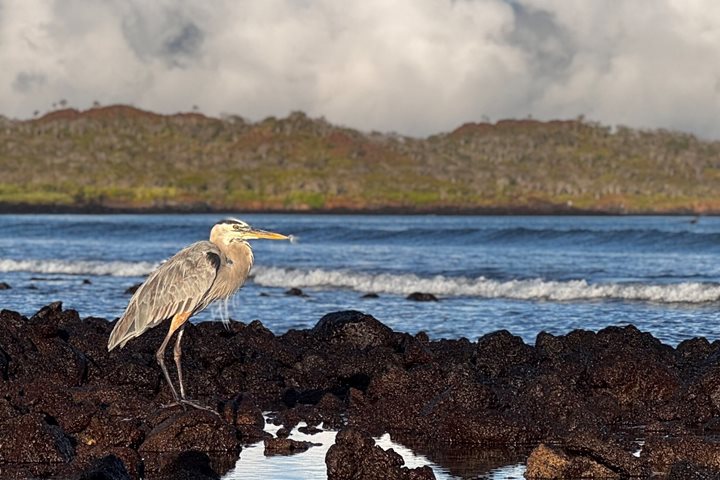After several days out in the western region, the most remote part of the Archipelago, the National Geographic Endeavour has relocated overnight back into the central area of the Galapagos.
We anchored just as the sun started to rise, revealing a very different landscape than the one we had experienced at the younger islands of Fernandina and Isabela. Today, our expedition plan is to explore the western coast of Santiago Island, the fourth largest of this remote Ecuadorian archipelago.
We started our day exploring Espumilla Beach. What was expected to be a relaxed, photography-centered excursion became one of the most hotly commented highlights of the day, as some lucky guests witnessed a young Galapagos sea lion pup in company of its mother, which only just escaped the jaws of a large Galapagos shark. He leaped out onto dry land on the beach, and the shark just him.
After returning to the ship for our well-deserved breakfast, the National Geographic Endeavour relocated a mile north for the remainder of the morning, to an area known as Buccaneer’s Cove. Here we would explore the coastline, both above and below the surface of the sea, while snorkeling, kayaking, or taking rides in our Zodiacs and glass-bottom boat.
We spent our afternoon a few miles further south, at Puerto Egas. After some relaxing beach time, we headed inland for our afternoon excursion. Here, a dry inland trail gave way to the rocky shoreline, where Galapagos Fur Seals basked around collapsed lava tunnels. As the tide was at its lowest point of the day, tidal pools teemed with young Galapagos Marine iguanas and small fish that where temporarily cut off from the ocean.
The sun began to set, turning a deep orange and descending behind Isabela and Fernandina, indicating that another day in this hidden paradise has come to an end. We made our way back to our floating home, to rest up for tomorrow’s adventures.







